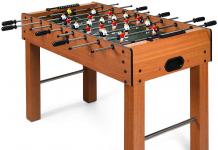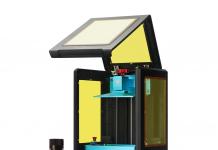Chinese manufacturers of TV boxes offer such a wide variety of products that it gets really difficult to pick one. Uhost3 manages to stand out, though.
The first thing that helps Uhost3 differentiate itself from all the other TV boxes is the shape. If you’ve ever stumbled upon any of the Chinese online stores that sell Android-powered set-top boxes, you know that these have a pretty standard design. Smallart, the manufacturer of the Uhost3 top-box, decided to go on a different route and created a circular box that looks a bit more stylish near video game consoles and any other things you might want to connect to your telly.

Even though the launch date is said to be near, the manufacturer has yet to make up its mind concerning the quad-core processor to be used in this unit. The two possible options are Allwinner A31s and Rockchip RK3188. This uncertainty aside, the other specs have been established. Uhost3 will come with 2GB of (DDR3 I assume) RAM and 8GB of internal storage.
The connectivity options are rather standard for today’s Android-powered TV boxes. In other words, Uhost3 comes with Wi-Fi, Bluetooth (hopefully 4.0), ethernet, 2 USB ports and a microSD card slot. The latter is a welcome addition to any Android device (Hear that, Google?) as the internal memory is hardly enough for the resource hungry apps. On top of that, if people want to store their multimedia files, the internal storage is barely sufficient for a DVD. The way I see it, the microSD slot should be used for compressed AVI/MKV files, music and photos (16GB cards are pretty cheap nowadays), while Full HD or even 3D Blu-Ray discs should be stored on external hard drives which would then be connected via USB.
As far as the HDMI output goes, according to this episode of HD Nation Tech Feed Edition, the HDMI cables either work or they don’t. You got that right, a $5 HDMI cable will offer the same video signal quality as a $250 one. The choice is yours, though, since it’s your money and you decide how to spend it.
The exact price and launch date have yet to be announced. In order to be competitive, the manufacturer should not request more than $100 on a single unit, but we’ll have to wait and see. The current specs of the device make it a really good option, but at the speed these gadgets evolve, you can expect even better performing TV boxes in the near future.
If you liked this post, please check the Philips DesignLine TV sets and Microsoft’s Illumiroom proof of concept, both of which would look absolutely great in any living room.










